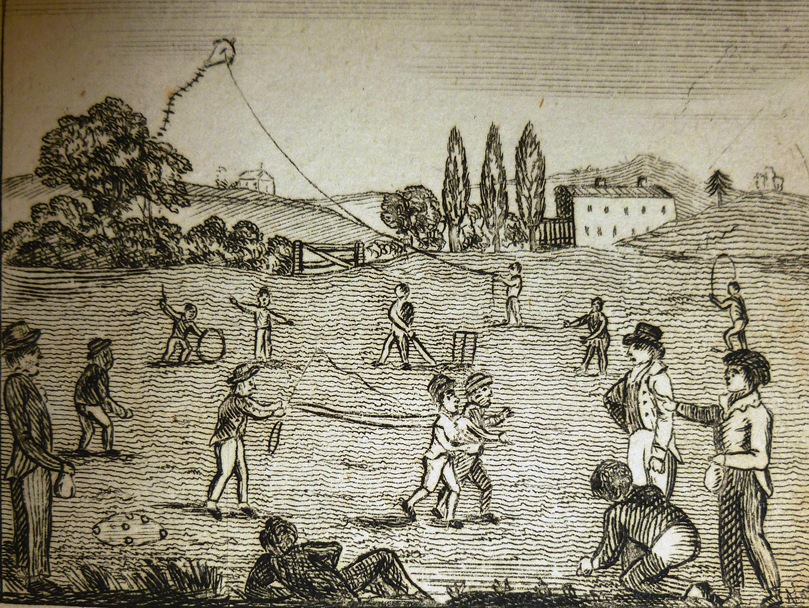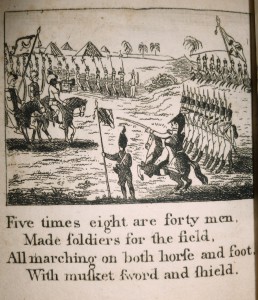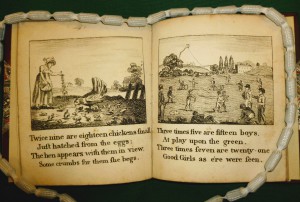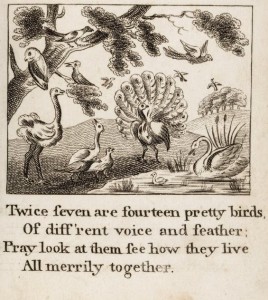
February 9, 2015, by Kathryn Steenson
Rhymes and ‘Rithmetic
Earlier this month the Government announced that all children in England will be expected to know up to the 12 times table by the time they leave primary school at age 11.
It has been touted as an old fashioned approach and a return to traditional educational values, so we thought we’d share with you some old-fashioned, traditional methods of teaching children basic multiplication. This charming little volume is a new addition to Special Collections (so new that it hasn’t, at time of writing, been fully catalogued yet).
‘Multiplication Table in Verse: embellished with fifteen copper-plate engravings, to illustrate the subject, and render it more engaging to the youthful mind’ (Briggs LT210.QA/M8) is a much smaller book than the title suggests. Designed to help children learn their times tables by rote, each page consists of an image and four lines of verse, each covering one or two calculations.
Printed by London children’s literature publisher, John Marshall, in 1807 (the binding appears to be later), the rather sweet little scenes depicted would have been extremely familiar to children and features topics that might interest them – children playing games, labourers in the fields, wild animals, even a plum-cake that is promised as a treat to children who behave. With only 15 pages, it doesn’t cover the multiplication tables completely, or even one times table in its entirety. Instead, the verses jump around, such as this page with 2 x 9 on the left hand page and 3 x 5 and 3 x 7 on the right.
The verses themselves are simple rhymes, a little forced in places, but actually fairly accessible to its intended audience. This is one of two copies of the 1807 edition of this title, the other being in the Brotherton Library Special Collections at Leeds University. It was republished a couple of times over the next few decades and some later versions have coloured engravings, but this is the earliest known edition.
The volume was purchased as an addition to the Briggs Collection of Educational Literature, our holdings of printed works of instruction for children from the 16th to the early 19th century. The collection is named after William Gerald Briggs (1885-1975), and the core of it has been at the University since 1950. Dr Briggs was Director of Education for Derbyshire before becoming a member of The University of Nottingham’s Council from 1939 until his retirement in 1973. He was an avid collector of published works related to education and self-improvement, and the collection contains almost 3,000 textbooks, games and children’s stories. This description probably makes it seem rather dry and worthy, but it contains some real treasures and we’ve mentioned it in several previous posts.
In case John Marshall’s verses aren’t your cup of tea, there are several other books designed to help children with their maths, a number of which also rely on rhymes or pictures to aid the memory. The Briggs Collection is available to search in the library catalogue, and the books themselves can be viewed in the Reading Room at King’s Meadow Campus. For more information about Briggs or any of our other holdings, please see our website or follow us on Twitter @mssUniNott.
No comments yet, fill out a comment to be the first




Leave a Reply